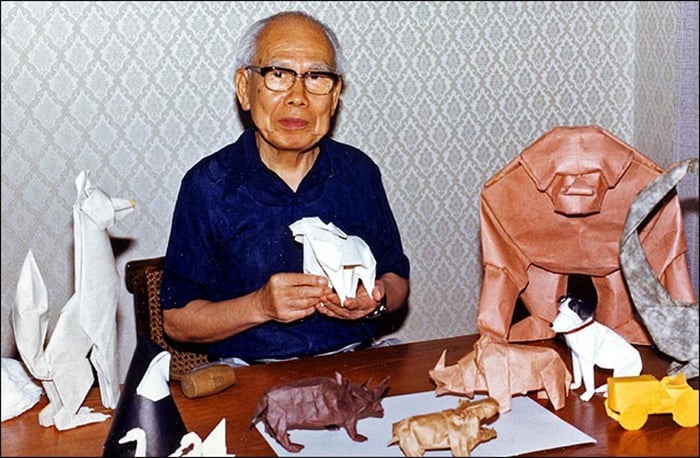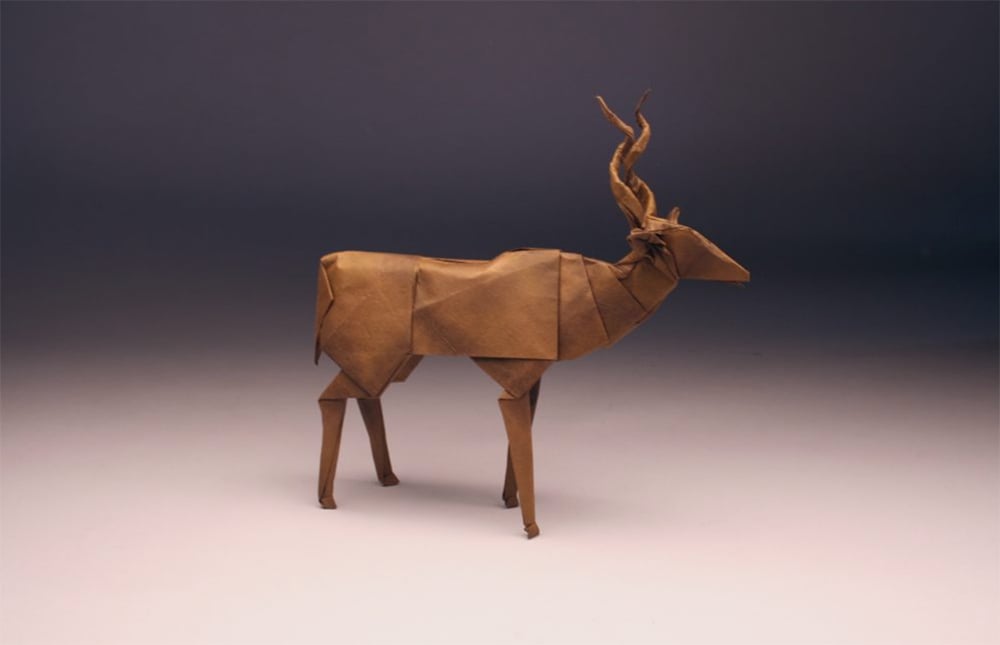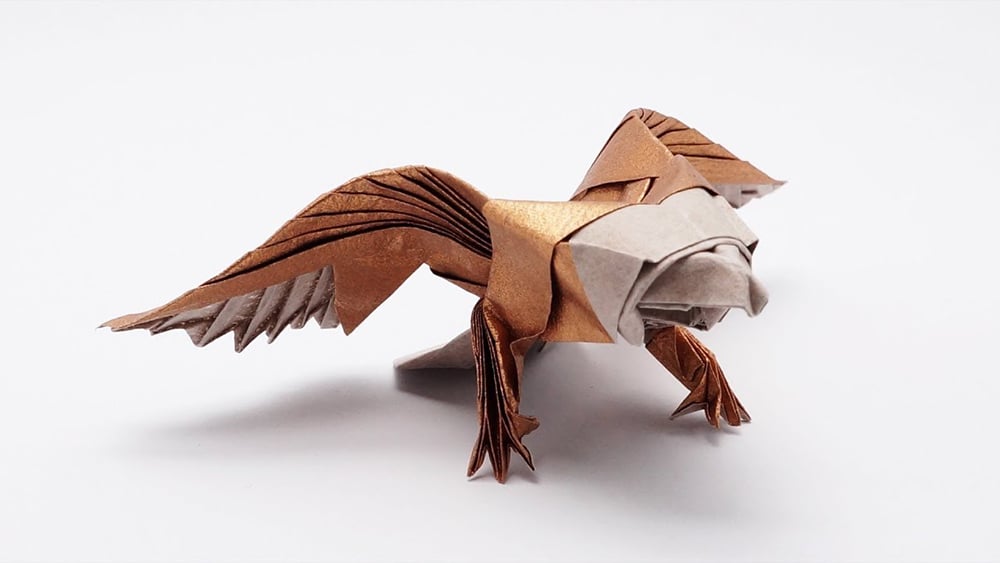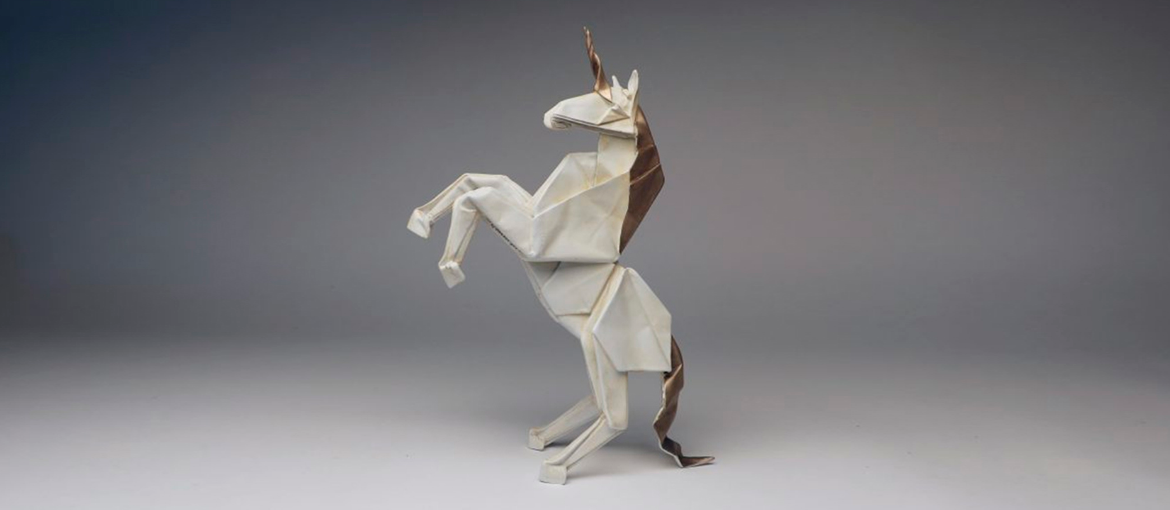Table of Contents
Many think of origami as simply a hobby or children’s game: in realty, it is an art form originating in Japan and now also used by companies, researchers and artists in design, aerospace, robotics, medicine and architecture. Origami has ancient roots: the practice of folding material into recognisable shapes goes hand in hand with the invention and spread of paper itself.
Paper folding turns a simple two-dimensional sheet into a three-dimensional form that can be used as a striking communicative tool for any business that wants to promote an idea, brand or product. “Origami” is a Japanese term derived from the words “oru” meaning “to fold”, and “kami” meaning “paper”.
The origins of Japanese origami
The origins of Japanese origami lie in the Shinto religion. Origami is used to create gohei – strips of paper folded into geometric shapes and held together by a thread or wooden sticks – which are used to mark sacred places.
The evolution of origami
There are many ways to practise this art form. After all, everything folds: from our clothes to flowers, from DNA to the galaxies that surround our universe.
This strange world blends art and mathematics, and over time experimentation has brought incredible results. The basic rules are simple: you simply take a sheet of paper and fold it, often extremely intricately, to create a sort of sculpture, without using scissors or glue.
Origami’s history dates back over 400 years, but the idea that a sheet of paper can become a sculpture comes from the doyen of this practice: Akira Yoshizawa (1911-2005). Yoshizawa left his job in a factory to devote his life to origami. For centuries, children had created simple shapes using paper, but Yoshizawa found a way to bring these to life. This is because he was the first to use the wet-folding technique, in other words wetting paper before and during folding. This allows the creation of more rounded shapes and, therefore, more complex models. And it transformed origami from a folk craft into an art form.

Many practitioners of origami have been inspired by Yoshizawa, but others have added new elements to the equation. Driving the evolution of origami over the last thirty years have been scientists, engineers and artists who have further elevated this Japanese art.
One of the world’s foremost experts on the art and science of origami is engineer Robert Lang. Although he holds a degree in electrical engineering from the California Institute of Technology, a master’s in electrical engineering from Stanford University and a PhD in applied physics, also from Caltech, his passion is folding paper into objects, particularly animals and insects. In 1988, he started working at NASA’s Jet Propulsion Laboratory, and has published over 80 papers and filed over 50 patents in his career.

As well as producing many books and artworks, Lang also applies mathematics to the world of origami. For example, he has created algorithms and computer programs like TreeMaker and Tessellatica, which take stick figures and create folding sequences for them. He has also worked with engineers at the Lawrence Livermore National Laboratory on the The Eyeglass prototype: a lens for an enormous telescope that, to travel in space, has to be literally folded.

Origami arrives…in space!
Origami, it seems, can also be used to search for alien worlds: the other big project that Lang has worked on, this time at the Jet Propulsion Laboratory, is called Starshade. It’s an enormous “flower” that will help find new exoplanets, in other words, planets that orbit stars outside our solar system.
Scientists have discovered thousands of exoplanets, often indirectly, thanks to the so-called transit method, in which planets are detected when they briefly pass between the star they are orbiting and the Earth, thus causing a temporary dimming in the star’s brightness. The enormous structure of Starshade, which folds itself out, blocks the star’s light, so that future telescopes can capture clearer images of planets.
Starshade could be launched at the same time as a telescope and, once in space, open itself and move into the right position for blocking the star’s light. In future, scientists will be able to study far away planets and, perhaps, find one that is similar to Earth, and therefore inhabitable. NASA has even published a tutorial for creating your own paper version of Starshade.
It was previously unimaginable that a simple folk tradition could become such an important tool for space research and design. The web has certainly played a key role in this evolution.
Origami reimagined thanks to art and the web
There are plenty of examples of artists and designers who use origami in original and interesting ways. Michael LaFosse, for example, has for over 30 years employed the same medium, that is to say paper, which he then uses to create his pieces, often beautiful and intricate figures of wild animals.

One of the artists who has found most success online is Jo Nakashima. Since 2007, Jo has been uploading his origami tutorials to YouTube to help teach other people the art of folding paper. His channel has over a million subscribers and more than 300 views.

Then there are artists who move beyond representation into abstraction. One such artist is Chris K. Palmer, who creates patterns from paper that change with movement and light, as you can see in this extract from the documentary Between the Folds.
https://www.youtube.com/watch?v=OlbneFIcXyU&feature=emb_title
It’s clear that in recent years the world of origami has become ever more fascinating and complex, and will, in future, attract the interest of people working in ever more fields. This art can be a huge source of inspiration for enthusiasts, artists and companies looking to experiment with something that is not only beautiful but also useful in everyday life.

